
How to Use LED: Two Pin (red): Examples, Pinouts, and Specs
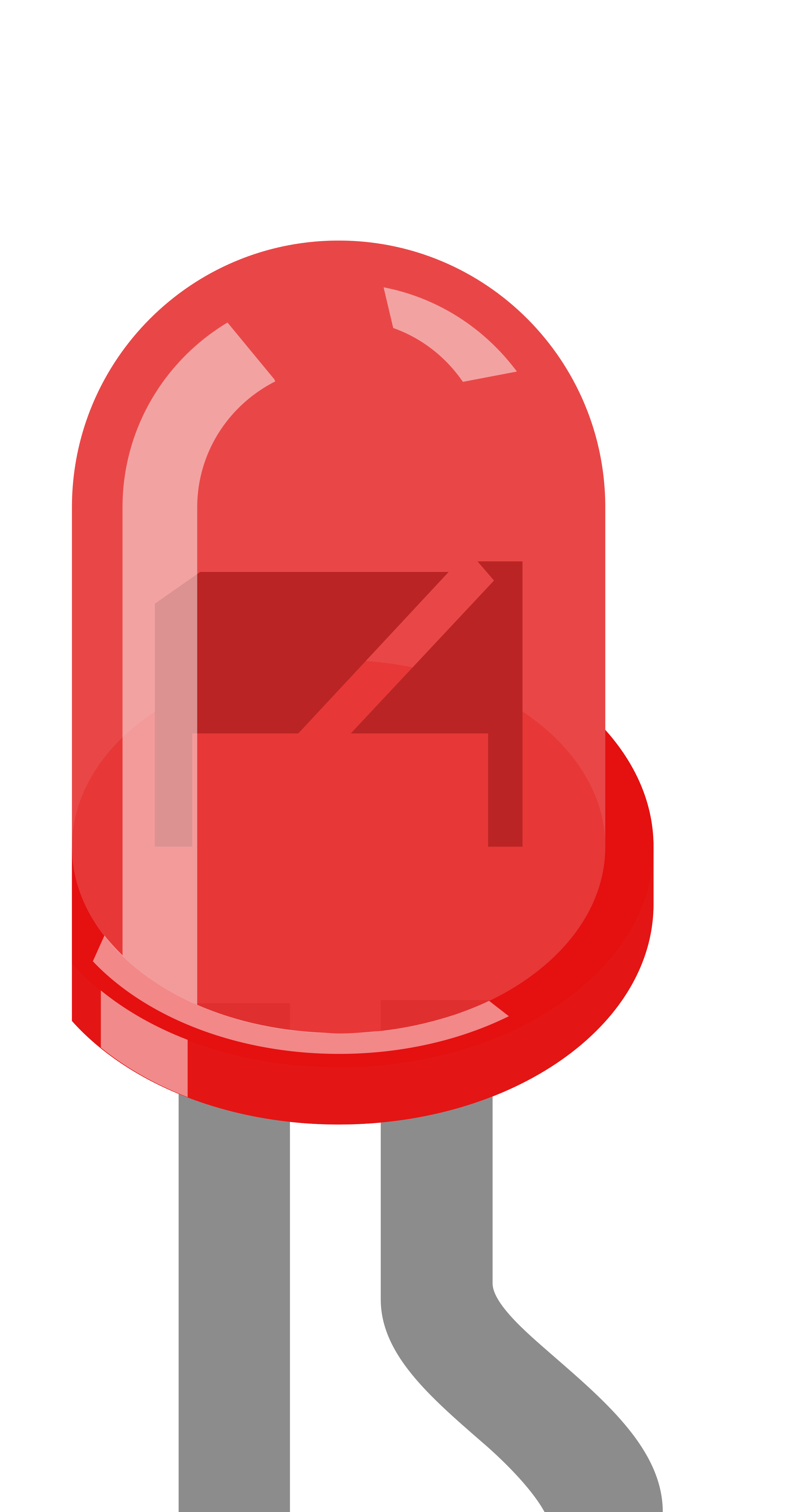
 Design with LED: Two Pin (red) in Cirkit Designer
Design with LED: Two Pin (red) in Cirkit DesignerIntroduction
A Light Emitting Diode (LED) is a semiconductor device that emits light when an electric current flows through it. The two-pin red LED is one of the most commonly used LEDs in electronic circuits. It is widely recognized for its bright red light, which is often used to indicate power, status, or alerts in various applications.
Explore Projects Built with LED: Two Pin (red)
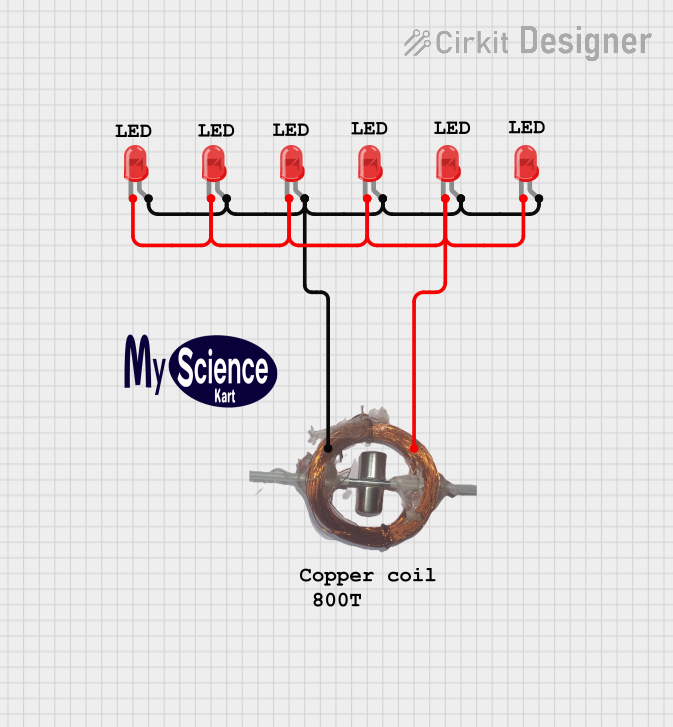
 Open Project in Cirkit Designer
Open Project in Cirkit Designer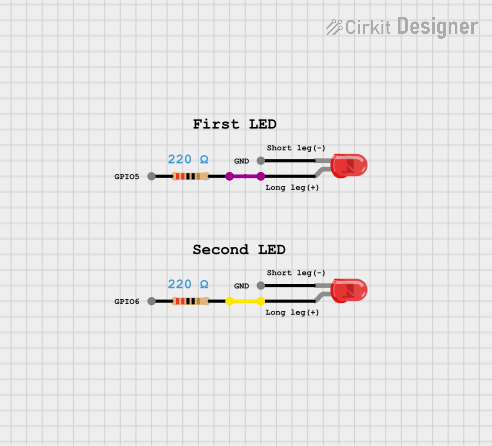
 Open Project in Cirkit Designer
Open Project in Cirkit Designer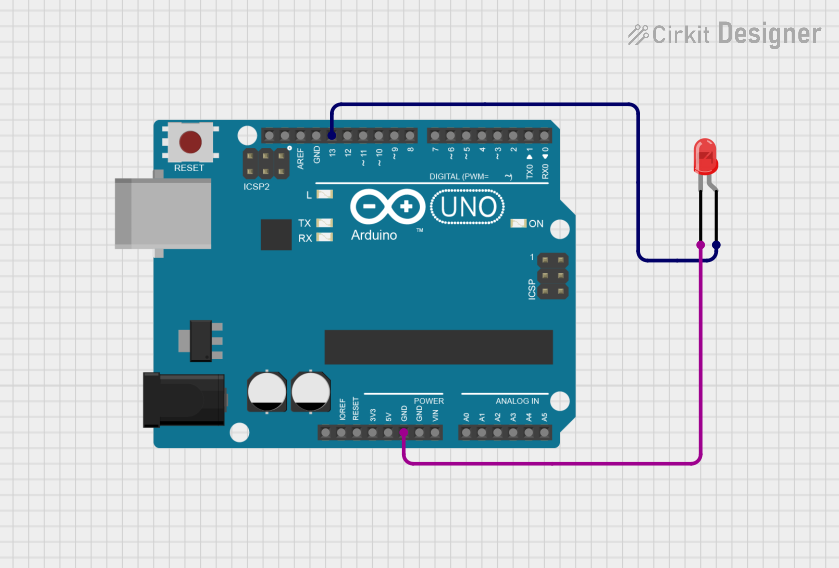
 Open Project in Cirkit Designer
Open Project in Cirkit Designer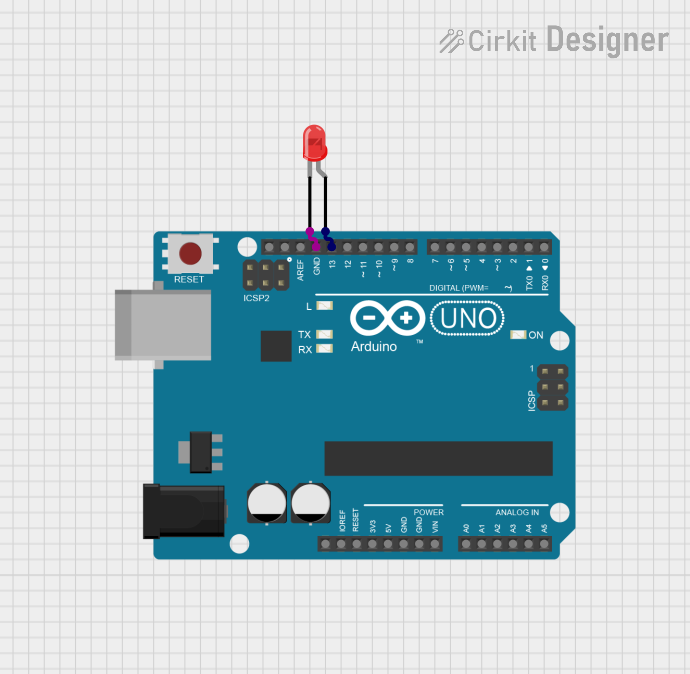
 Open Project in Cirkit Designer
Open Project in Cirkit DesignerExplore Projects Built with LED: Two Pin (red)

 Open Project in Cirkit Designer
Open Project in Cirkit Designer
 Open Project in Cirkit Designer
Open Project in Cirkit Designer
 Open Project in Cirkit Designer
Open Project in Cirkit Designer
 Open Project in Cirkit Designer
Open Project in Cirkit DesignerCommon Applications and Use Cases
- Power indicators in electronic devices
- Status indicators for circuits and systems
- Visual alerts in alarms or notifications
- Simple light sources in DIY electronics projects
- Educational purposes for learning basic electronics
Technical Specifications
Below are the key technical details for a standard two-pin red LED:
| Parameter | Value |
|---|---|
| Forward Voltage (Vf) | 1.8V to 2.2V |
| Forward Current (If) | 20mA (typical) |
| Maximum Current (Imax) | 30mA |
| Reverse Voltage (Vr) | 5V (maximum) |
| Wavelength | 620nm to 630nm (red light) |
| Viewing Angle | 20° to 30° |
| Operating Temperature | -40°C to +85°C |
Pin Configuration and Descriptions
The two-pin red LED has a simple pinout:
| Pin | Description |
|---|---|
| Anode (+) | The longer pin, connected to the positive terminal. |
| Cathode (-) | The shorter pin, connected to the negative terminal or ground. |
Note: The cathode side of the LED is often marked with a flat edge on the LED casing.
Usage Instructions
How to Use the Component in a Circuit
Determine the Resistor Value: LEDs require a current-limiting resistor to prevent damage. Use Ohm's Law to calculate the resistor value: [ R = \frac{V_{supply} - V_f}{I_f} ]
- (V_{supply}): Supply voltage
- (V_f): Forward voltage of the LED (1.8V to 2.2V for red LEDs)
- (I_f): Desired forward current (typically 20mA)
For example, with a 5V supply: [ R = \frac{5V - 2V}{0.02A} = 150\Omega ]
Connect the LED:
- Connect the anode (+) to the positive terminal of the power source through the resistor.
- Connect the cathode (-) to the ground.
Test the Circuit: Power the circuit and observe the LED emitting red light.
Important Considerations and Best Practices
- Always use a current-limiting resistor to avoid overdriving the LED.
- Ensure the LED is connected in the correct polarity (anode to positive, cathode to ground).
- Avoid exceeding the maximum current rating (30mA) to prevent damage.
- If using multiple LEDs, consider using separate resistors for each LED or a series-parallel configuration.
Example: Connecting to an Arduino UNO
Below is an example of how to connect a red LED to an Arduino UNO and control it using code:
Circuit Setup
- Connect the anode (+) of the LED to a 220Ω resistor.
- Connect the other end of the resistor to digital pin 13 on the Arduino.
- Connect the cathode (-) of the LED to the Arduino's GND pin.
Arduino Code
// Simple LED Blink Example
// This code blinks a red LED connected to pin 13 of the Arduino UNO.
void setup() {
pinMode(13, OUTPUT); // Set pin 13 as an output
}
void loop() {
digitalWrite(13, HIGH); // Turn the LED on
delay(1000); // Wait for 1 second
digitalWrite(13, LOW); // Turn the LED off
delay(1000); // Wait for 1 second
}
Tip: Adjust the
delay()values to change the blinking speed.
Troubleshooting and FAQs
Common Issues and Solutions
LED Does Not Light Up:
- Cause: Incorrect polarity.
- Solution: Ensure the anode is connected to the positive terminal and the cathode to ground.
- Cause: No current-limiting resistor or incorrect resistor value.
- Solution: Use a resistor with the correct value (e.g., 150Ω to 220Ω for a 5V supply).
- Cause: Incorrect polarity.
LED is Dim:
- Cause: Resistor value too high.
- Solution: Use a lower resistor value, but ensure the current does not exceed 20mA.
- Cause: Resistor value too high.
LED Burns Out:
- Cause: Excessive current.
- Solution: Always use a current-limiting resistor and verify the circuit design.
- Cause: Excessive current.
LED Flickers:
- Cause: Unstable power supply or loose connections.
- Solution: Check the power source and ensure all connections are secure.
- Cause: Unstable power supply or loose connections.
FAQs
Q: Can I connect the LED directly to a 3.3V or 5V power source?
A: No, you must use a current-limiting resistor to prevent damage to the LED.
Q: How do I know the polarity of the LED?
A: The longer pin is the anode (+), and the shorter pin is the cathode (-). Additionally, the cathode side often has a flat edge on the casing.
Q: Can I use the LED with a higher voltage power supply?
A: Yes, but you must calculate the appropriate resistor value to limit the current to 20mA.
Q: What happens if I reverse the polarity of the LED?
A: The LED will not light up, but it will not be damaged as long as the reverse voltage does not exceed 5V.
By following this documentation, you can effectively use a two-pin red LED in your electronic projects!